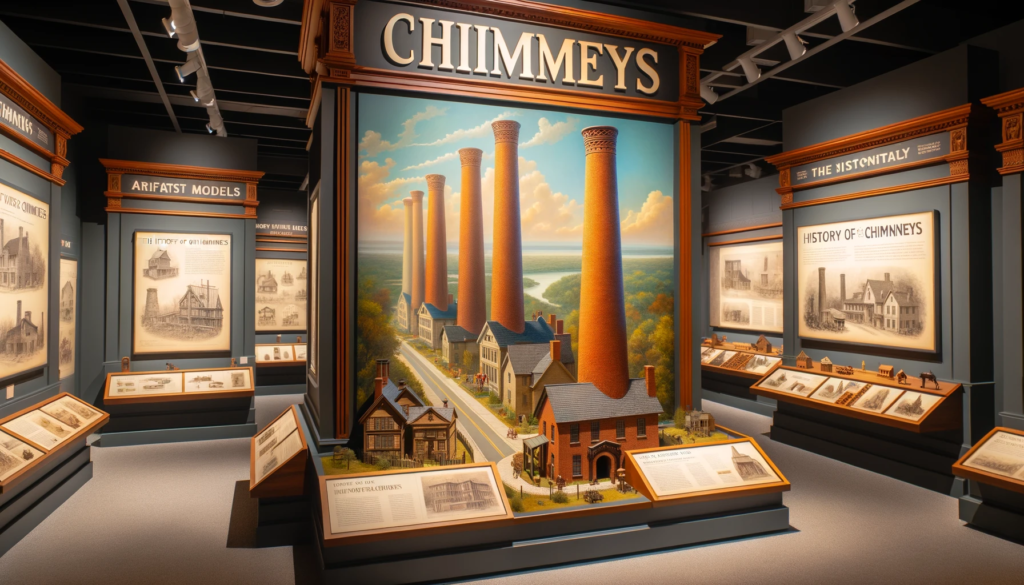A Glimpse into the Past
New Jersey, affectionately known as the Garden State, boasts a rich tapestry of history. The chimneys of its historic homes are no exception, standing tall as silent witnesses to bygone eras. These iconic structures have weathered storms and centuries, serving as vital architectural elements that reflect the distinct periods of their construction. However, with the march of time, these chimneys require specialized care to preserve their original beauty and function.
The Significance of Historic Chimneys
Historic chimneys are not just about bricks and mortar; they tell stories. From the colonial era to Victorian times, chimneys evolved in design, reflecting the socio-economic and aesthetic sensibilities of their periods. Their intricate designs, unique brick patterns, and artisan craftsmanship set them apart, making their preservation vital not just for homeowners but for the communities they grace.
Common Challenges in Chimney Preservation
With age, historic chimneys in the Garden State face various challenges:
- Erosion and Wear: The constant exposure to New Jersey’s varied climate leads to the erosion of the mortar and wear of bricks.
- Structural Issues: Over time, the chimney’s foundation may settle, causing tilting or structural instability.
- Outdated Flue Systems: Older chimneys often have flue systems that don’t meet modern safety standards.
Understanding these challenges is the first step toward effective preservation.
Methods to Preserve and Restore
Preserving a historic chimney requires a blend of traditional methods and modern techniques:
- Repointing: This involves replacing the eroded mortar without affecting the original brickwork.
- Structural Reinforcement: For chimneys showing signs of tilting, it’s essential to stabilize them using non-invasive methods to retain their historic integrity.
- Flue Relining: Modernize the flue system by relining it, ensuring it’s safe for use without altering the chimney’s exterior appearance.
Incorporating Modern Safety Standards
While preserving the aesthetic beauty of historic chimneys, it’s imperative to integrate modern safety standards. This includes:
- Installing Chimney Caps: Protect the chimney from water damage and wildlife intrusion.
- Regular Inspections: Schedule periodic inspections to detect and address issues early.
- Cleanings: Regular cleanings ensure the chimney functions efficiently and safely.
Working with Experts
The preservation of historic chimneys requires a delicate touch, one that balances restoration with conservation. It’s vital to work with experts familiar with the Garden State’s diverse range of historic chimneys. These experts can provide guidance on materials, techniques, and safety measures, ensuring the chimney’s longevity without compromising its historic essence.
Community Involvement and Benefits
Preserving historic chimneys is not just the responsibility of homeowners. Community involvement plays a pivotal role:
- Local Workshops: Hosting workshops can educate residents about the importance of chimney preservation.
- Grants and Funds: Communities can offer grants or funding opportunities for homeowners looking to restore their historic chimneys.
- Awareness Campaigns: Raise awareness about the cultural significance of these structures, encouraging collective efforts in their preservation.
Conclusion: The Legacy Continues
Historic chimneys in the Garden State are more than mere architectural elements; they’re symbols of a storied past, echoing tales of times gone by. By preserving them, we not only uphold our architectural heritage but also ensure these tales continue to inspire future generations.
Chimney Work
For those seeking expert advice and services for their historic chimneys in New Jersey, M&M Roofing Corp offers specialized chimney work, ensuring these iconic structures stand tall for years to come.

